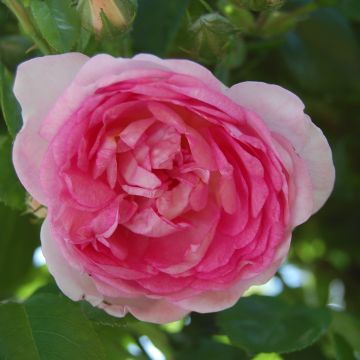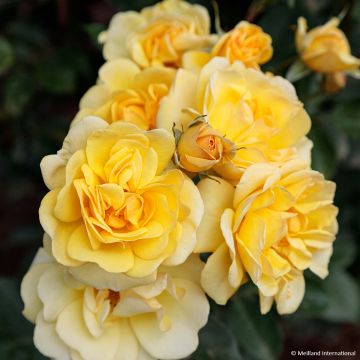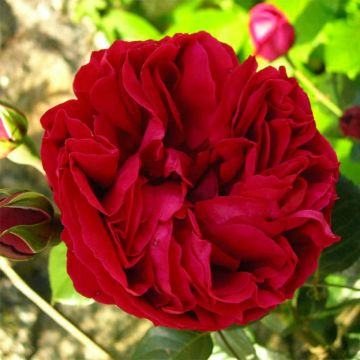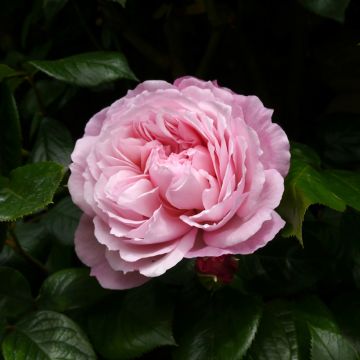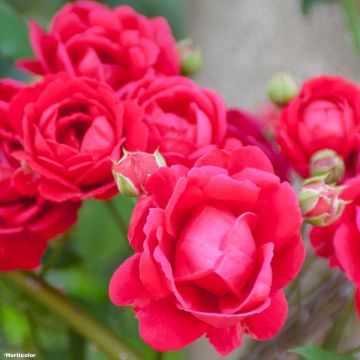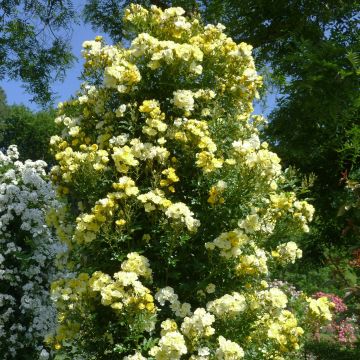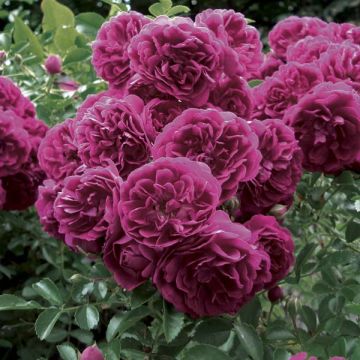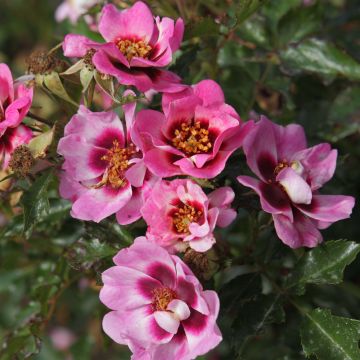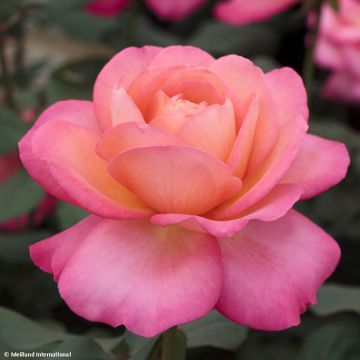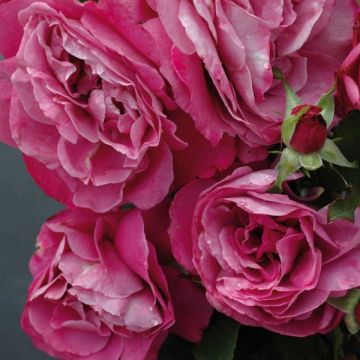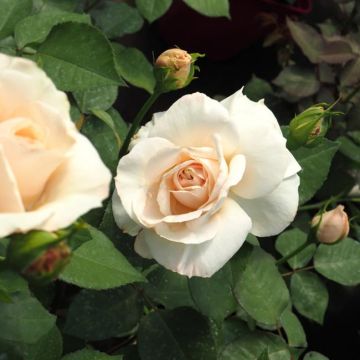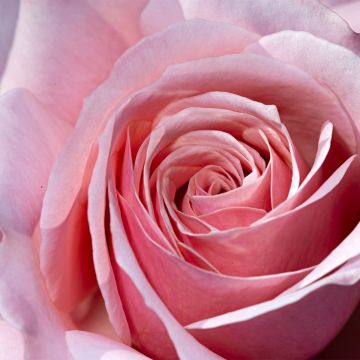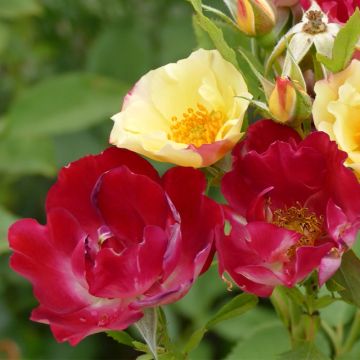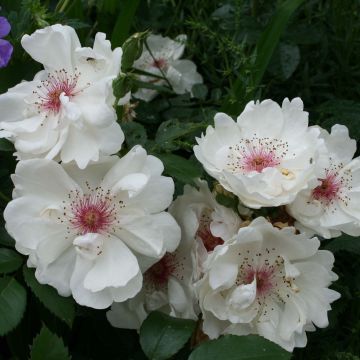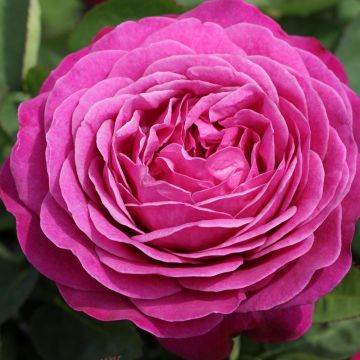

Rosa Sénégal - Climbing Rose
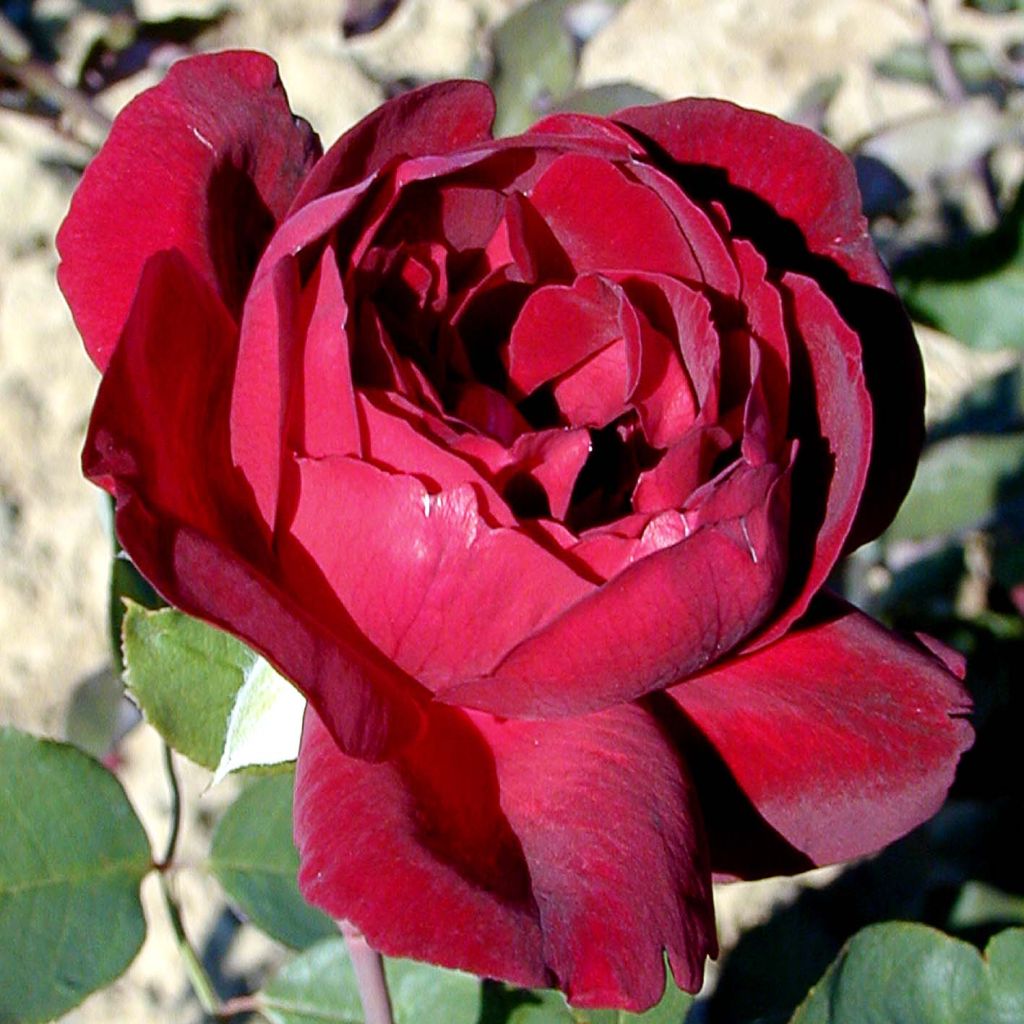

Rosa Sénégal - Climbing Rose
Rosa Sénégal - Climbing Rose
Rosa Sénégal
This item cannot be shipped to the selected country
Delivery charge from €5.90
Delivery charge from €5.90
Delivery to Corse prohibited
More information
Schedule delivery date,
and select date in basket
This plant carries a 6 months recovery warranty
More information
We guarantee the quality of our plants for a full growing cycle, and will replace at our expense any plant that fails to recover under normal climatic and planting conditions.
From €5.90 for pickup delivery and €6.90 for home delivery
Express home delivery from €8.90.
From €5.90 for pickup delivery and €6.90 for home delivery
Express home delivery from €8.90.
Delivery to Corse prohibited: UE law prohibits the import of this plant from mainland France to Corse as part of the fight against Xylella fastidiosa. Please accept our sincere apologies.
More information
Does this plant fit my garden?
Set up your Plantfit profile →
Description
The 'Senegal' Rose is a vigorous hybrid of the bushy Tea Rose that loves to climb and show off its magnificent bouquets. A powerful evocation of African lands, its large, velvety red, turbinate roses capture black reflections and a pleasant scent of dark flowers. They are double, heavy with petals, shaped like fully bloomed cups, and displayed on abundant foliage that exudes elegance. Its summer flowering is dazzling, but the autumn rebloom, although more modest, is sometimes absent depending on the year.
The 'Senegal' rose is part of the complex family of Tea Rose hybrids. Created after 'Guinea', it resembles it but has eliminated some of its flaws, such as weak hardiness. On the other hand, it possesses all the qualities, including a truly sumptuous dark red flowering, a climbing habit without stiffness, and an ability to expand when skillfully pruned. It was bred by French rose breeder Charles Mallerin (the father of the beautiful 'Guinea') in 1944. This is a climbing rose with a flexible habit and thorny stems reaching 2.50 m (8ft) to 4 m (13ft) in height and 1.50 m (5ft) to 2.50 m (8ft) in width, depending on the growing conditions and the way it is trained. Its growth is vigorous, and its dark green, shiny, and deciduous foliage may be susceptible to diseases such as blackspot and powdery mildew under certain conditions, which will require preventive treatment. It stands out for the unique colours and texture of its large, round, and wide roses measuring 10 to 12 cm (4 to 5in). They are gathered in small clusters of 3 to 5, appearing on the current year's shoots. Their fragrance is of medium intensity. The reblooming is irregular, depending on the climate and the care given to the plant. This variety is sensitive to scorching exposures.
'Senegal' is a superb rose still found in many gardens, a testament to its longevity. It will be highlighted in partial shade, in a large shrub border, or front of an evergreen hedge. It also loves to climb on a small pole, column, or train on an arch near the terrace, even in a small garden, to enjoy its theatrical flowering. It is perfectly planted above romantic-inspired borders and pairs well with the mauve roses of 'Blue Girl', 'Sissi', 'Mamy Blue', or the white corollas of the English rose 'Winchester Cathedral'. Its dark flowers also provide an excellent contrast to pastel pink blooms. Lastly, it is an ideal companion for flowering shrubs (butterfly bushes, mock oranges, hibiscus) and perennials like bellflowers and foxgloves, adding a charming touch.
Report an error about the product description
Rosa Sénégal - Climbing Rose in pictures
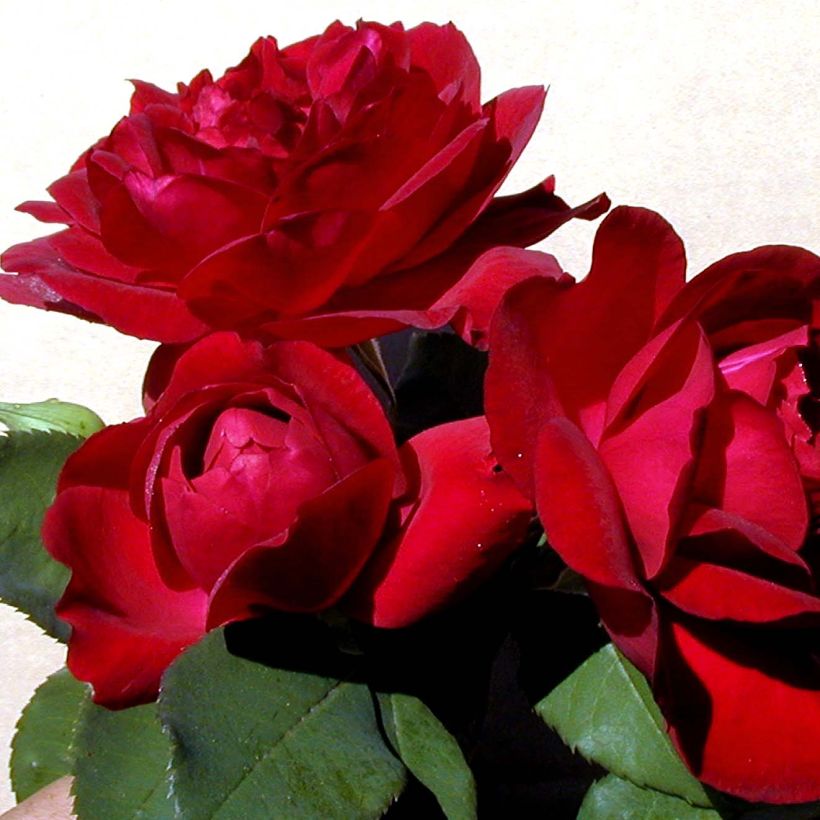

Plant habit
Flowering
Foliage
Botanical data
Rosa
Sénégal
Rosaceae
Cultivar or hybrid
Other Climbing Roses
Planting and care
'Sénégal' thrives in semi-shaded areas with fertile and moisture-retaining soil to support its flowering. It's important to treat it preventively against rose diseases and regularly fertilize it to promote autumn reblooming. To plant it in well-worked soil, crumble the earth well and add an amendment like blood, fish and bone at the bottom of the planting hole. After planting, water generously to remove air pockets. In dry weather, it's necessary to water regularly for a few weeks to facilitate root development. To achieve beautiful flowering, train the branches as much as possible horizontally.
To take care of repeat-flowering roses, you should prune them at the end of winter. If you want to reduce the size of the rose, you can shorten it, but avoid cutting it too much as this can harm the flowering process. However, don't hesitate to prune the branches to remove any dead or unsightly wood. Removing faded flowers throughout the summer will help promote even more abundant flowering.
Roses may develop unsightly spots at the end of summer, but this is a natural occurrence and doesn't harm the rose's growth.
Planting period
Intended location
Care
-
, onOrder confirmed
Reply from on Promesse de fleurs
Roses by purpose
Haven't found what you were looking for?
Hardiness is the lowest winter temperature a plant can endure without suffering serious damage or even dying. However, hardiness is affected by location (a sheltered area, such as a patio), protection (winter cover) and soil type (hardiness is improved by well-drained soil).

Photo Sharing Terms & Conditions
In order to encourage gardeners to interact and share their experiences, Promesse de fleurs offers various media enabling content to be uploaded onto its Site - in particular via the ‘Photo sharing’ module.
The User agrees to refrain from:
- Posting any content that is illegal, prejudicial, insulting, racist, inciteful to hatred, revisionist, contrary to public decency, that infringes on privacy or on the privacy rights of third parties, in particular the publicity rights of persons and goods, intellectual property rights, or the right to privacy.
- Submitting content on behalf of a third party;
- Impersonate the identity of a third party and/or publish any personal information about a third party;
In general, the User undertakes to refrain from any unethical behaviour.
All Content (in particular text, comments, files, images, photos, videos, creative works, etc.), which may be subject to property or intellectual property rights, image or other private rights, shall remain the property of the User, subject to the limited rights granted by the terms of the licence granted by Promesse de fleurs as stated below. Users are at liberty to publish or not to publish such Content on the Site, notably via the ‘Photo Sharing’ facility, and accept that this Content shall be made public and freely accessible, notably on the Internet.
Users further acknowledge, undertake to have ,and guarantee that they hold all necessary rights and permissions to publish such material on the Site, in particular with regard to the legislation in force pertaining to any privacy, property, intellectual property, image, or contractual rights, or rights of any other nature. By publishing such Content on the Site, Users acknowledge accepting full liability as publishers of the Content within the meaning of the law, and grant Promesse de fleurs, free of charge, an inclusive, worldwide licence for the said Content for the entire duration of its publication, including all reproduction, representation, up/downloading, displaying, performing, transmission, and storage rights.
Users also grant permission for their name to be linked to the Content and accept that this link may not always be made available.
By engaging in posting material, Users consent to their Content becoming automatically accessible on the Internet, in particular on other sites and/or blogs and/or web pages of the Promesse de fleurs site, including in particular social pages and the Promesse de fleurs catalogue.
Users may secure the removal of entrusted content free of charge by issuing a simple request via our contact form.
The flowering period indicated on our website applies to countries and regions located in USDA zone 8 (France, the United Kingdom, Ireland, the Netherlands, etc.)
It will vary according to where you live:
- In zones 9 to 10 (Italy, Spain, Greece, etc.), flowering will occur about 2 to 4 weeks earlier.
- In zones 6 to 7 (Germany, Poland, Slovenia, and lower mountainous regions), flowering will be delayed by 2 to 3 weeks.
- In zone 5 (Central Europe, Scandinavia), blooming will be delayed by 3 to 5 weeks.
In temperate climates, pruning of spring-flowering shrubs (forsythia, spireas, etc.) should be done just after flowering.
Pruning of summer-flowering shrubs (Indian Lilac, Perovskia, etc.) can be done in winter or spring.
In cold regions as well as with frost-sensitive plants, avoid pruning too early when severe frosts may still occur.
The planting period indicated on our website applies to countries and regions located in USDA zone 8 (France, United Kingdom, Ireland, Netherlands).
It will vary according to where you live:
- In Mediterranean zones (Marseille, Madrid, Milan, etc.), autumn and winter are the best planting periods.
- In continental zones (Strasbourg, Munich, Vienna, etc.), delay planting by 2 to 3 weeks in spring and bring it forward by 2 to 4 weeks in autumn.
- In mountainous regions (the Alps, Pyrenees, Carpathians, etc.), it is best to plant in late spring (May-June) or late summer (August-September).
The harvesting period indicated on our website applies to countries and regions in USDA zone 8 (France, England, Ireland, the Netherlands).
In colder areas (Scandinavia, Poland, Austria...) fruit and vegetable harvests are likely to be delayed by 3-4 weeks.
In warmer areas (Italy, Spain, Greece, etc.), harvesting will probably take place earlier, depending on weather conditions.
The sowing periods indicated on our website apply to countries and regions within USDA Zone 8 (France, UK, Ireland, Netherlands).
In colder areas (Scandinavia, Poland, Austria...), delay any outdoor sowing by 3-4 weeks, or sow under glass.
In warmer climes (Italy, Spain, Greece, etc.), bring outdoor sowing forward by a few weeks.


































